‘We lock eyes, and time seems to stop’: A visit to Canada’s beluga whales
‘As soon as the engine turns off and we bob in the bay, flashes of white torpedo towards me on each side, coming in closer and closer’ – Hillary Richard dives with beluga whales off the coast of Churchill, Canada
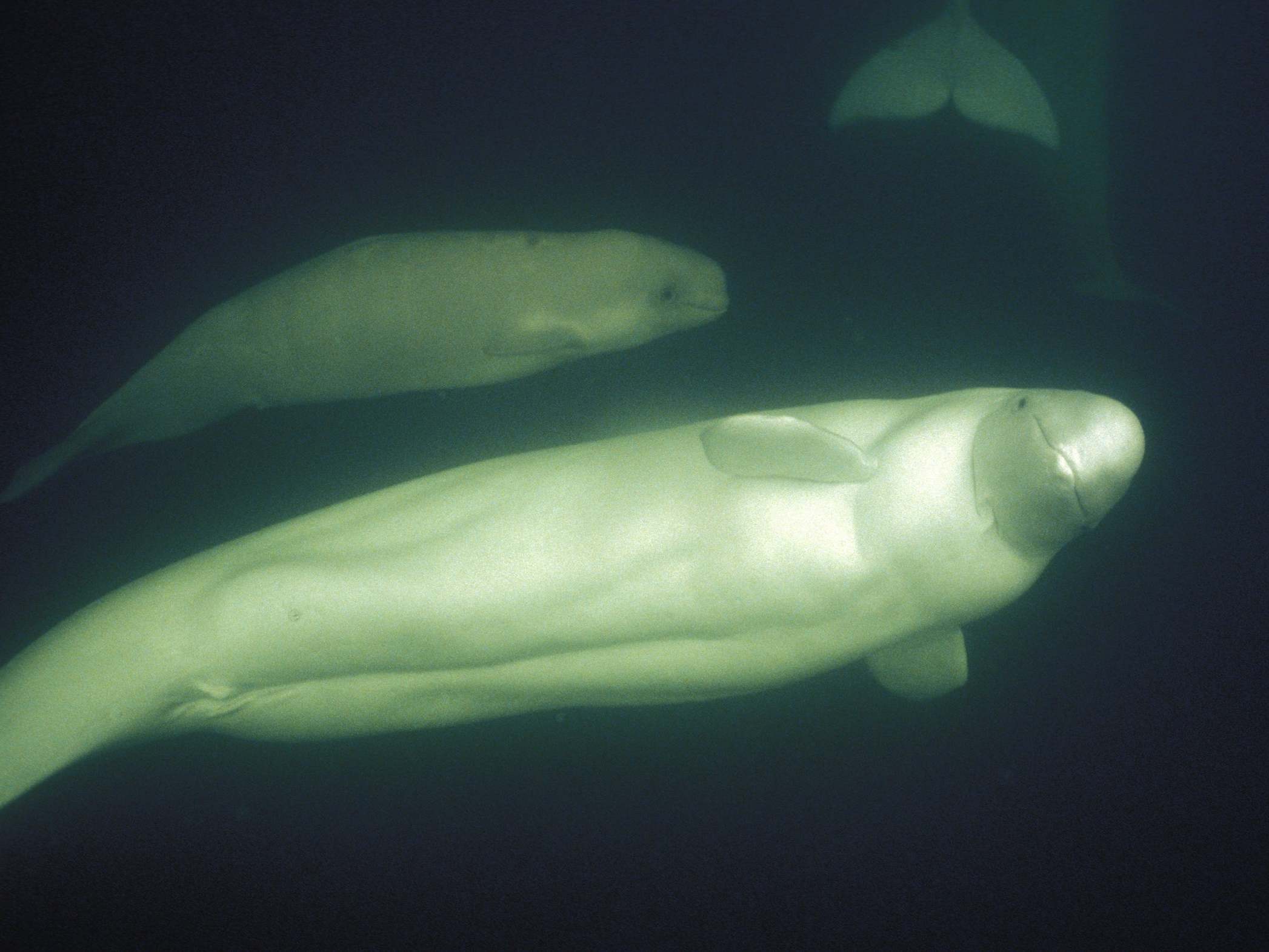
Your support helps us to tell the story
From reproductive rights to climate change to Big Tech, The Independent is on the ground when the story is developing. Whether it's investigating the financials of Elon Musk's pro-Trump PAC or producing our latest documentary, 'The A Word', which shines a light on the American women fighting for reproductive rights, we know how important it is to parse out the facts from the messaging.
At such a critical moment in US history, we need reporters on the ground. Your donation allows us to keep sending journalists to speak to both sides of the story.
The Independent is trusted by Americans across the entire political spectrum. And unlike many other quality news outlets, we choose not to lock Americans out of our reporting and analysis with paywalls. We believe quality journalism should be available to everyone, paid for by those who can afford it.
Your support makes all the difference.Beneath the waves, two smouldering coals for eyes watch me with an intense, unyielding stare. Pristine white bodies float up elegantly from the depths, one after another, surrounding my kayak in the open water. Their ghostly pale faces with wide, Joker-esque smiles push closer. A long, powerful sound bursts up through the air, like a slowly deflating balloon, followed by silence and more expectant staring.
I am having a one-sided conversation with a pod of curious beluga whales. The mouth of Churchill River in northern Manitoba, Canada, is calm and quiet on this chilly, overcast July day, but these bright white whales are not. Belugas, nicknamed “the canaries of the sea” thanks to their song-like sounds, are social, playful and highly communicative. They repeat their shrieks and tunes, floating around me in anticipatory silence. There is only one thing left to do: sing along.
In response, raucous clicks and squeals drift up out of the dark water, like someone tapping on a microphone for attention, broken by steady streams of blowhole bubbles. I get the distinct feeling that I am being discussed.
“Brace yourself,” warns Noah Ransom, my wildlife guide, who had been singing his own songs to belugas in another kayak about 6m away.
A beluga lines up beneath me in the 2C water. An adult female beluga can reach 4m in length – roughly the same size as my sea kayak – and weigh nearly 1.4 tons. The kayak rises seamlessly and evenly as the beluga pushes me up about a foot out of the water, then lowers me back down. A storm of bubbles arrives off the side, then a flash of white appears. An impish face stares up at me, looking for a reaction, like a puppy who has just nosed over a ball. I laugh in shock while Ransom claps and cheers. The beluga dives down, raising and lowering the kayak a few more times, like the world’s most gentle roller coaster. Although the belugas are massive and their potential for destruction seems enormous, in those mere seconds, their actions were light and playful.
“We are kind of like their rubber duckies in the tub,” Ransom says. “This is playtime.”
Each June, approximately 60,000 belugas migrate from Arctic waters down to Hudson Bay, which serves as a summer playground of sorts for the largest concentration of the whales worldwide. They give birth in these relatively warmer, sheltered waters, where there is no real pressure on the fish population nine months out of the year.

In this part of North America, with its wide-open, often inhospitable landscape, keeping a distance from other humans comes naturally. (As of 8 May, the isolated tundra town of Churchill had no cases of coronavirus. The province of Manitoba lists 283.) The belugas interpret personal space much differently.
Hudson Bay feeds into Churchill River, where around 1,000 belugas take up residence alongside our two sea kayaks last summer. They arrive in pods – bright, almost fluorescent white adults with happy clown faces and the occasional grey baby tucked in between, trying to keep up. As I paddle, belugas raced alongside the kayak. When I stop, they nudge the paddles and rudders with a palpable curiosity. The sounds of gasping blowholes mix with their normal chatter, which develop a kind of conversational rhythm.
Signs all over Churchill proclaim it the polar bear capital of the world. Roughly 10,000 tourists a year have visit the town of fewer than 1,000 people for exactly that reason
In an area of the world known for its majestic polar bears, the belugas have gone largely unnoticed. In autumn and early winter, tourists usually arrive in Churchill for a chance to see some of the roughly 1,000 polar bears living in that area. By then, the Hudson Bay is full of ice and the belugas are long gone. The whales’ limited interaction with other species in Hudson Bay has allowed them to remain curious, innocent and safe, possessing an almost childlike wonder.
My own childlike wonder has brought me here. So many animals shape our childhood through stories and art. They seem so real and present, until one day the sing-alongs and cartoons end. They are an integral part of our lives, but we aren’t a part of theirs. I am part of a generation that grew up singing about baby belugas so often that we seemed like long-lost friends. It felt like a foregone conclusion that one day we would cross paths somewhere in the deep blue sea.
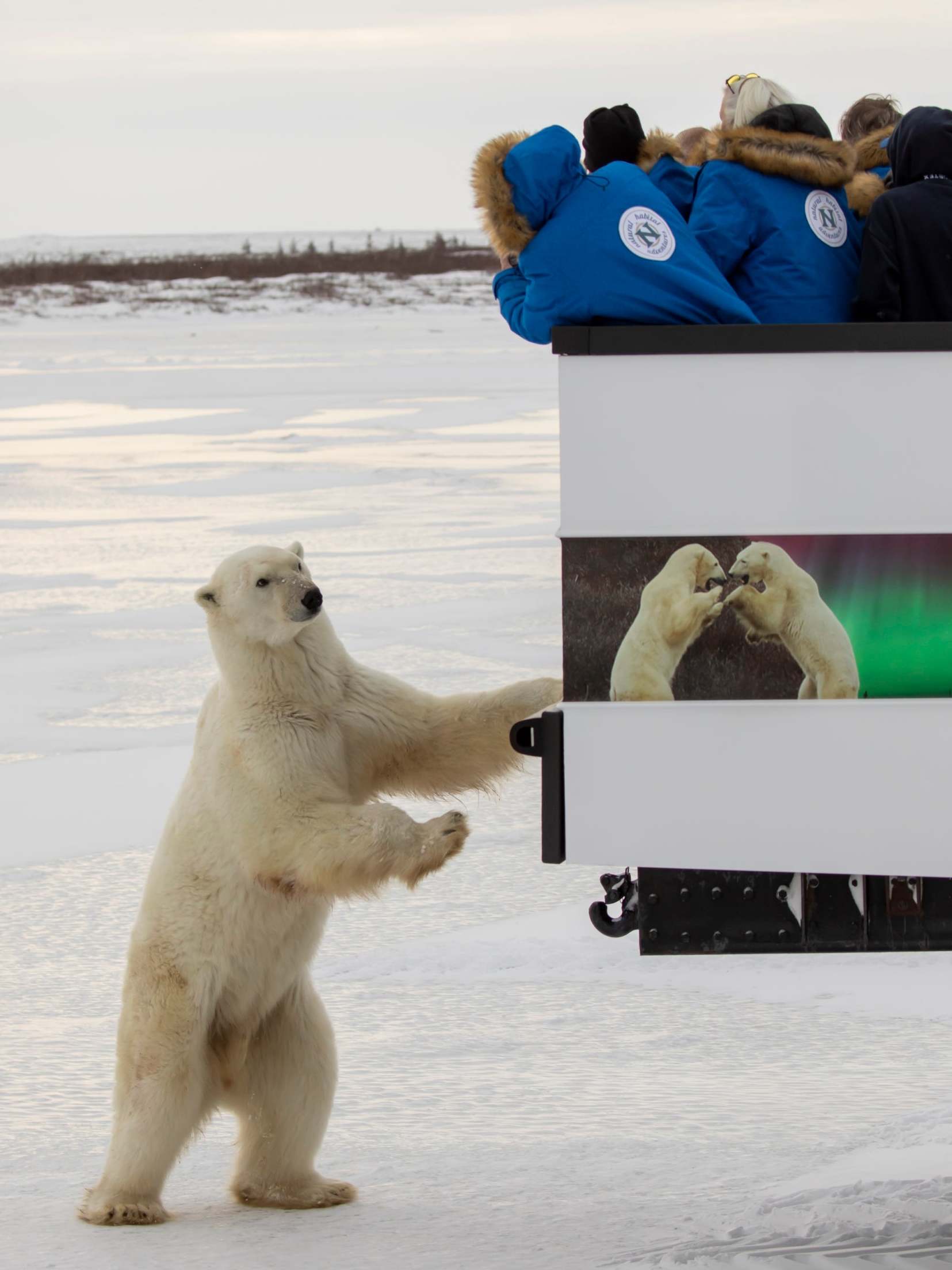
I arrived in Churchill knowing that nothing is guaranteed when it comes to wild animal encounters. I hoped to glimpse a beluga or two. Instead, out on the water, I entered a completely different world – one devoid of humans, where I was the strange creature on display. I had come to watch them, but really, these marvellous creatures were watching me.
Even on a summer day on the water, Churchill is a quiet place, where the wind carry sounds for miles. The atmospheric buzz of all-terrain vehicles on coastal bear patrol hums consistently in the background. Locals have brought their children and dogs to splash in the tide and pick up pretty stones along the shoreline, taking advantage of the long northern sun. Polar bear warning signs go unheeded; the deafening hum of the vicious, biting flies seem like more of an imminent threat. Off in the distance, past the fireweed and haphazard wildflowers, bright flashes of white catch the sunlight. That far out, with no accompanying sound, it is hard to tell whether they are cresting waves, swimming bears or (much more likely) belugas.
Signs all over Churchill proclaim it “the polar bear capital of the world”. Roughly 10,000 tourists a year visit the town of fewer than 1,000 people for exactly that reason – to observe the bears in a kind of cold weather safari from the comfort of intense off-road vehicles outfitted with snow tyres.
Wally Daudrich, a tour guide, saw an opportunity to highlight the area’s other, less dangerous summer residents. Like the belugas (and many people who end up in Churchill full time), Daudrich only intended to stay for a season. Four decades later, he runs Lazy Bear Lodge and the associated Lazy Bear Expeditions and Tours, one of only two tour companies in town last year that offered water-based beluga tours, and the only full-service one. Lazy Bear is cautiously optimistic about the 2020 summer season, but as is the case these days, everything is subject to change.
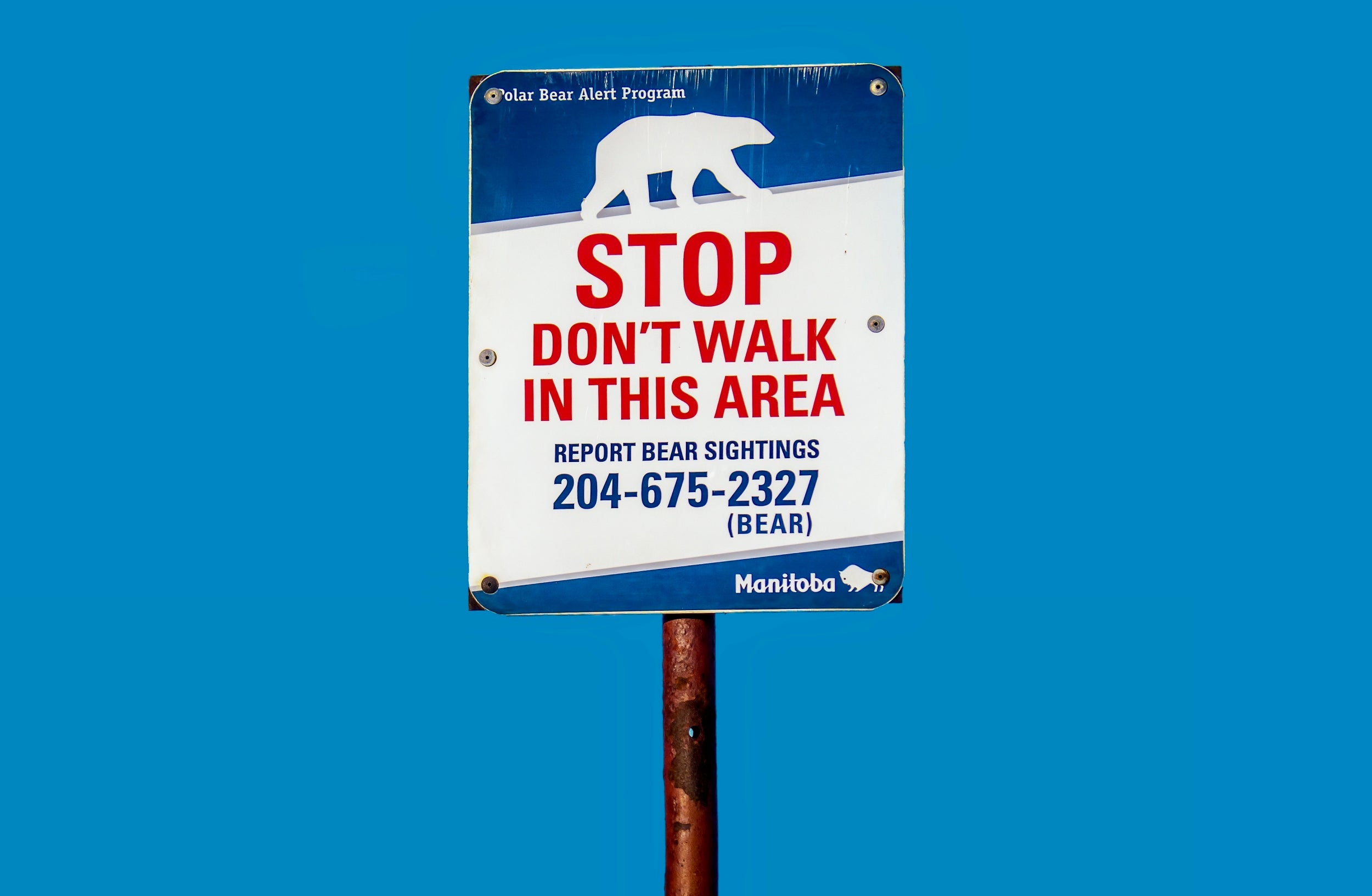
Every chance he gets, Daudrich is out on the water – usually as the captain of the Sam Hearne, a tour boat named after one of his favourite historical figures, who joined the British Royal Navy at age 13 and then came to Hudson Bay at 18 to work as a trader. On tours, Daudrich navigates along part of Hearne’s old shipping route, around Button Bay, the Prince of Wales Fort and Eskimo Point – a favourite summer resting spot for polar bears.
In general, the whales somehow recognise that their own strength and power in the water overshadow ours, and they are extremely gentle — but they are large, and accidents happen
The day after my first kayaking beluga encounter, I join Daudrich on his tour boat where he rattles off decades of observations and anecdotes about belugas. The whales like high-pitched sounds, especially women’s and children’s voices, possibly because those sounds hit the frequency belugas are used to. They notice bright colours. They have an uncanny instinct about people. “They can sense chronic diseases and mobility issues, and they seem to have a greater curiosity for them,” he says.
“They’re very intelligent animals. They can clearly recognise the prop of each boat,” says Daudrich, who has often encountered pods of repeat visitors from his tour boat. Off to the side, a bright white whale shoots up vertically, as if standing. The belugas occasionally “spy hop” – pop straight up out of the water, like a submarine scope – to get a better look at things, face to face.
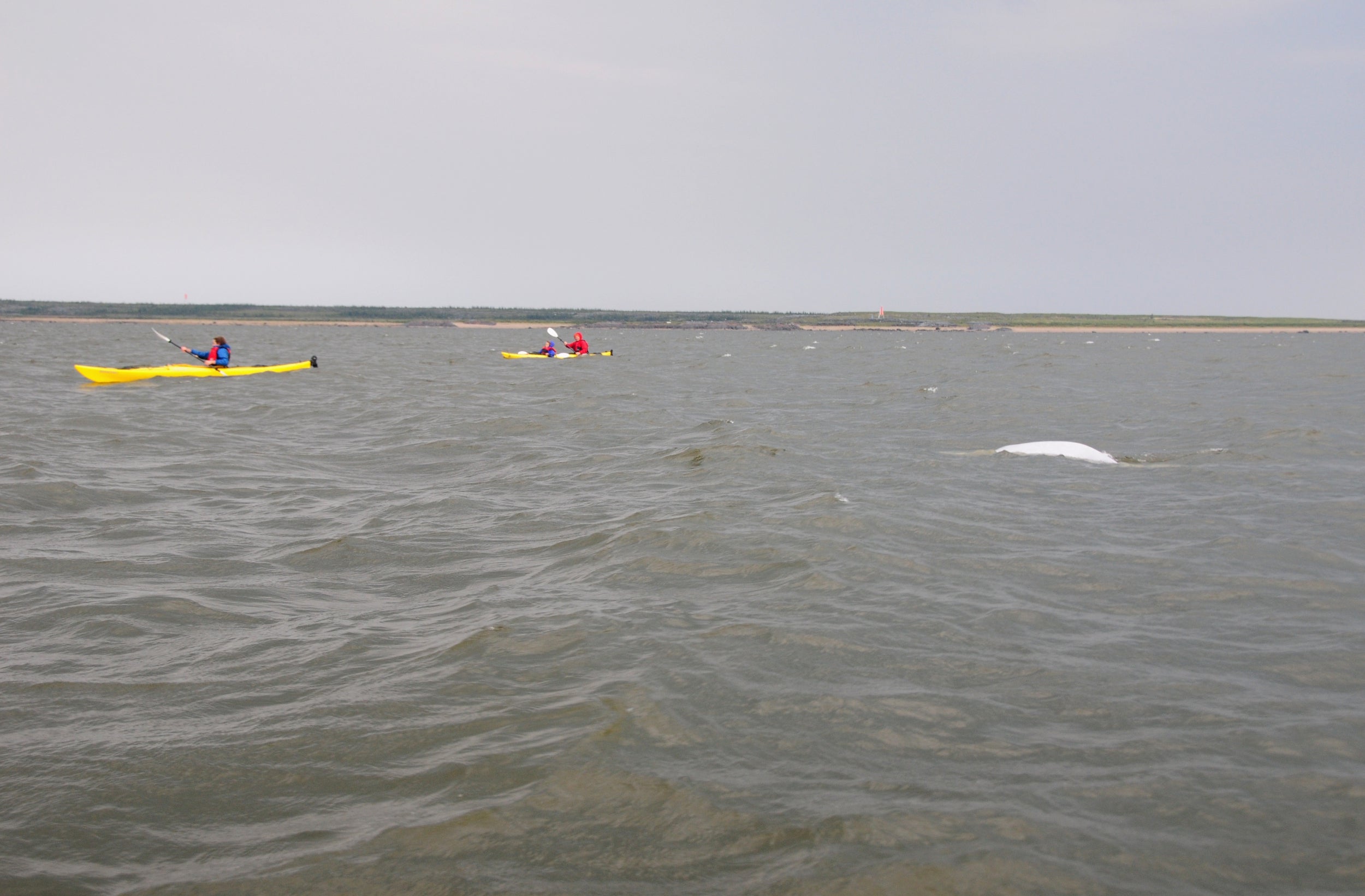
Under water, belugas rely heavily on sound. They are some of the most vocal marine mammals, using echolocation to bounce sound waves off surfaces and judge distances. Because of their natural habitat in dark, icy waters, belugas remain somewhat mysterious to scientists in many ways – but they are widely regarded as extremely intuitive and sensitive, with excellent communication skills.
When the belugas are nearby, their many comical sounds drift up above the water. Daudrich likes to use a hydrophone (an underwater microphone) to listen in below the surface, which is nothing short of a cacophony. Beneath the waves, there’s an overstimulated audio highway of chirps, clicks, shrieks, squeals and static.
“It’s crowded down there. There’s lots of background chatter like you would hear in a crowded room,” he says. “Most of their sounds are high-pitched but they have a whole repertoire of lower sounds, too.”
The belugas are curious, playful and unafraid — and as a result, Daudrich has lost a number of hydrophones to the whales over the years.
In general, the whales somehow recognise that their own strength and power in the water overshadow ours, and they are extremely gentle — but they are large, and accidents happen.
“They have occasionally tipped kayaks. They like to play. They’ll lift you straight up and put you down, but if you stop paddling, they’ll lose interest and go away,” he says.
And of course, they like to chat.
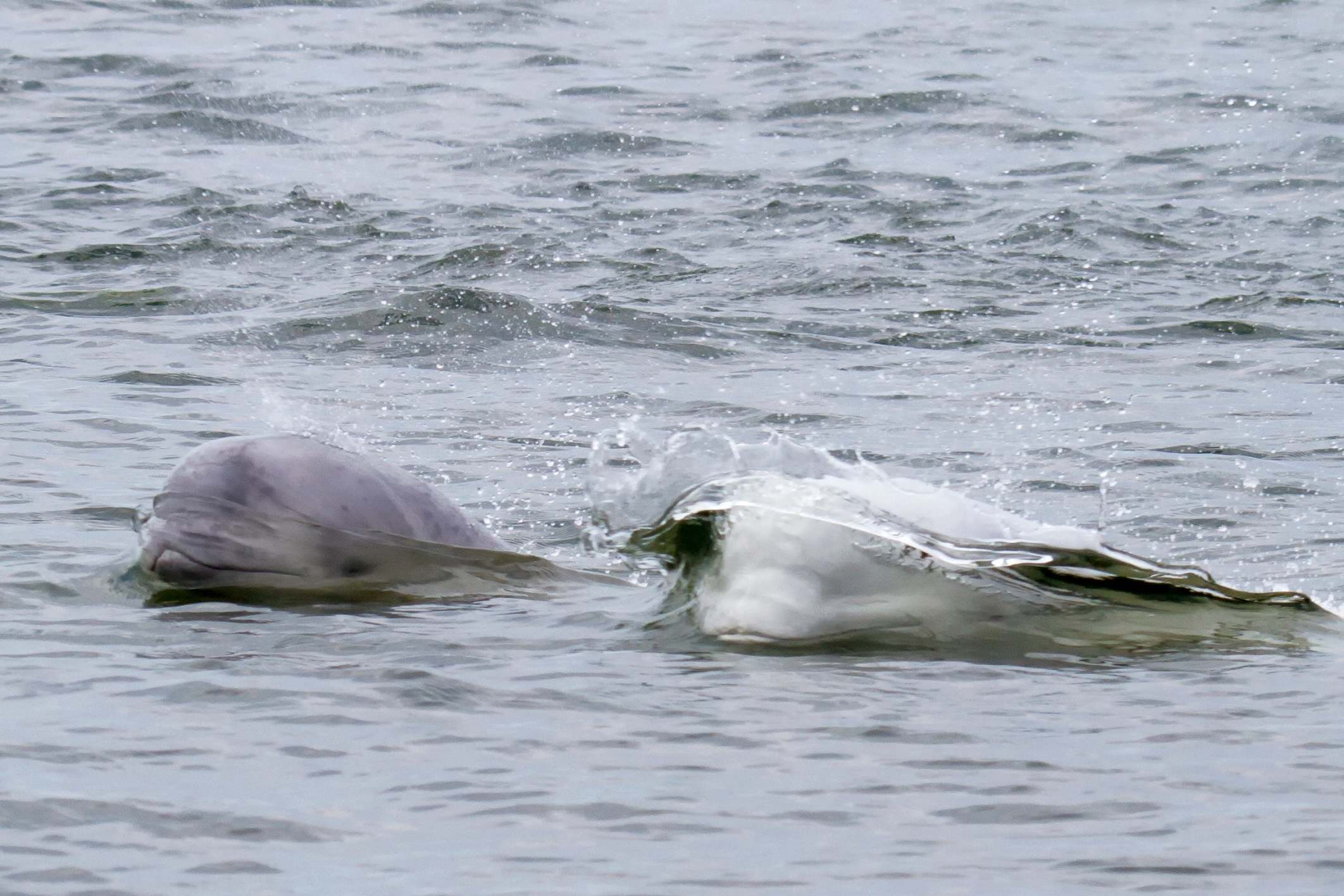
The greater Churchill area is a place that in theory could be overrun with seasonal tour companies ready to cash in — but that was not the case when I visited. Part of it was because of its isolated geography. Last year, visitors could only travel to Churchill via an expensive charter flight or the notoriously unreliable two-day train, both originating from Winnipeg, 624 miles away. Another reason is its expense. Prices are high across the board in Churchill because of its inaccessibility, with most accommodations disproportionately expensive for their quality. There is no real market for the luxury traveller, and absolutely no patience for the selfie crowds. It’s about the wildlife here, and anyone who wants more is missing the point.
Churchill often gets overlooked, and in general, plenty of residents are fine with that. However, in 2018, Fisheries and Oceans Canada issued blanket nationwide restrictions on whale watching that required keeping a minimum distance of 100m all times. This created a problem in Churchill, because nobody told the belugas.
“In other places, most people see six whales on a tour, maybe 200 to 300 yards out. Here, it’s 1,000 to 5,000 whales, and they love to interact,” says Daudrich. “The whales are so friendly here that we can’t abide by those rules. We keep our distance but they approach us.”
They exude an innocence, wisdom and patient acceptance I haven’t seen in my other wildlife encounters. Here we are, bobbing along in the same currents, very different beings
This comes in contrast to other areas, like the dwindling beluga population in Quebec’s St Lawrence River, which has heavy shipping traffic and large vessels.
“They behave differently in the St Lawrence River than in their natural environment,” says Daudrich, noting that kayaks and inflatable Zodiacs don’t seem to interfere with their communication. “They keep a distance from everyone because they use their bulbous foreheads to navigate and communicate.”
Churchill’s Beluga Whale Tour Operators Association, an advocacy group that establishes protections for the belugas and tourism codes of conduct among wildlife tour operators, petitioned the government on this issue. (Daudrich is president, alongside board members from Frontiers North, Sea North Tours and Churchill Wild.)
Before the 2018 restrictions, visitors had been able to snorkel in various places alongside whales, including the Churchill River. That was banned nationwide without exception, but after investigating the boat distance issue, the federal government issued special Churchill-specific distance regulations. Lazy Bear came up with “aqua gliding,” in which an inflatable boat tows a large foam mat that people can lie on and put their faces in the water.
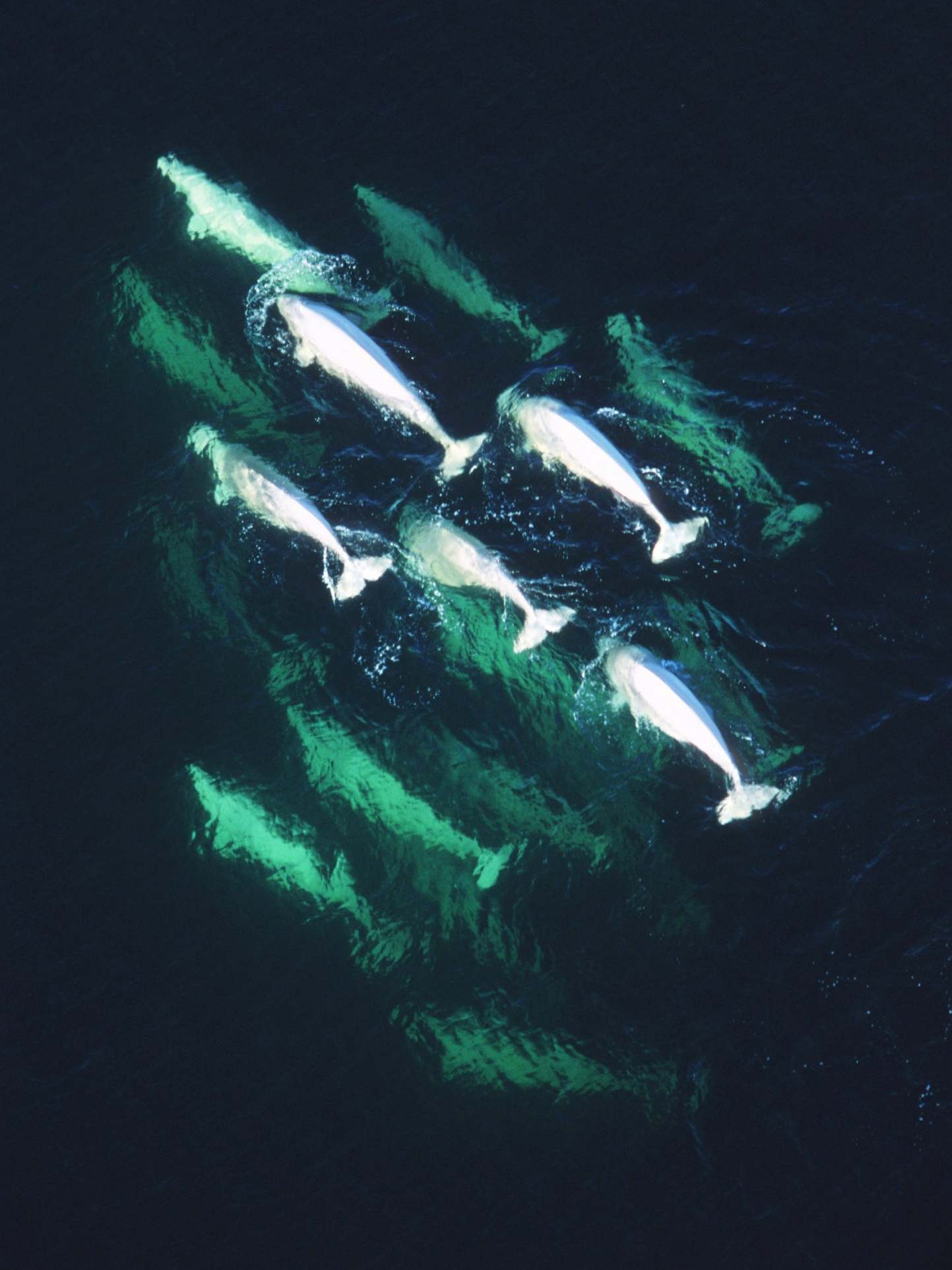
“We found that when people are completely in the water, the whales back off around 5 to 10 feet,” Daudrich says. “They especially don’t seem to like scuba — I think it’s the bubbles.” In contrast, aqua gliding keeps bodies out of the water and the whales feel free to approach at will.
On a rainy July afternoon, I lie face down on a floating mat attached to a Zodiac in Churchill River. I am completely covered in a dry suit and a snorkelling mask, ready to peek beneath the near-freezing waves. As soon as the engine turns off and we bob in the bay, flashes of white torpedo towards me on each side, coming in closer and closer.
I put my mask in the water and open up my eyes, just in time to see a ghostly face. The beluga floats towards me, turning from side to side so that each wide-set eye could evaluate me. Nearly face-to-face, I could see for myself how expressive these creatures are. Unlike other whales, belugas have a flexible neck – making it possible for them to turn and look at you – even seemingly nod, like humans. Their bulbous melon heads are also flexible, which allows them to make recognizable facial expressions.
We lock eyes, and time seems to stop. They exude an innocence, wisdom and patient acceptance I haven’t seen in my other wildlife encounters. Here we are, bobbing along in the same currents, very different beings sharing the exact same moment in time. I get the sense, real or imagined, that we understand each other on some level.
The belugas will be gone in a few weeks. Each September, they head up north to the Arctic, where they live amid sea ice that protects them from predators, relying on their catalogue of singsong chirps, whistles, clicks and tunes to communicate with each other and navigate their environment. This summer, they will bring their joyful noise back to the shelters of Churchill and Hudson Bay, whether the humans arrive or not.
© The New York Times
Join our commenting forum
Join thought-provoking conversations, follow other Independent readers and see their replies
Comments